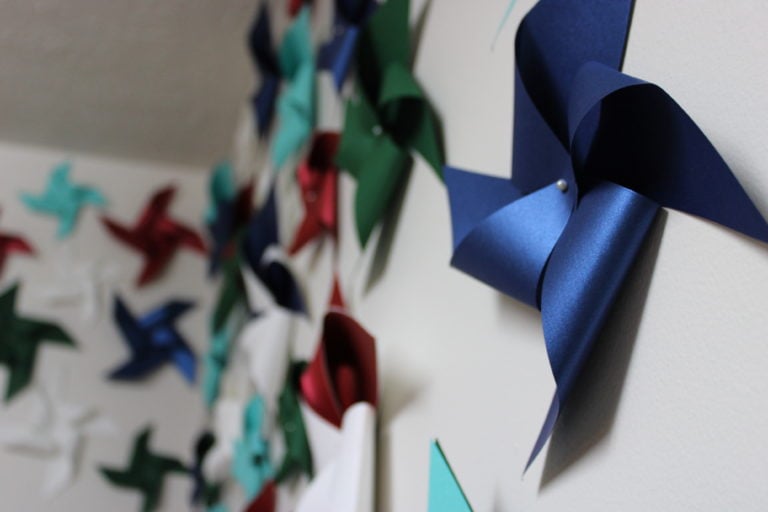DIY Papercraft Creators – Top Safety Precautions
Many of the activities and materials involved in the making of papercraft can be unsafe if creators do not follow proper guidelines for using, storing, and disposing of art materials.
Our creative pursuits bring us in contact with substances and materials that could be harmful to our health. Indeed, even materials that are non-toxic can become dangerous when mishandled.
And like many other endeavors in craft making, the potential risk involved when creating papercraft varies from minor ones like cuts and bruises to life-threatening accidents such as the ingestion of toxic or harmful materials.
This article sheds light on some of the ground rules for working safely while creating papercraft. And although most of these rules just seem like common sense, they bear repeating. Remember, too, that things you take for granted might not be obvious to children who are especially prone to mishandling, chewing, or swallowing art materials.
Top Safety Precautions for DIY Papercraft Creators
At paperpapers, we have put together 7 safety precautions that will ensure that the products, tools, and techniques you use when making papercrafts are safe for you and your kids.
1. Choose Products Carefully
As much as possible, use only eco-friendly materials. This way, you will not only mitigate the net impact of your craft making on the environment, you will also be avoiding materials that contain potentially toxic ingredients.
So, for example, avoid aerosol sprays that may contain CFCs and oil paints that contain thinners. Also, avoid instant papier-mache, which may contain asbestos fibers and lead from pigments in colored printing inks.

2. Look Out for Proper Labeling
Always choose materials that are safe enough for children, with labels that clearly indicate they are non-toxic.
Improved labeling made possible by the Art and Creative Materials Institute (ACMI) makes it easier to choose acceptable children’s art materials easier.
The ACMI conducts a certification program in which product formulas are analyzed, certified, and then labeled appropriately as either non-toxic and safe, or toxic, and potentially harmful.
Products bearing the AP (Approved Product) seal are certified non-toxic. And such products are the safest, especially with young children.
Products bearing the CL (Caution Label) contain ingredients that are toxic or hazardous. And are not appropriate for use with young children.
Many products have labels that say a product is “non-toxic,” but unless they also have a label showing that they are certified, these can be misleading. They may not pose an immediate risk of poisoning if ingested, inhaled, or absorbed by the skin, but there may be dangers associated with long term use.
3. Use Protective Equipment
Always wear protective glasses when possible, and craft makers who wear contact lenses should be cautioned that lenses can trap dust or other airborne materials and irritate the eyes.
Using a respirator is also advised. It’s also smart to have painting clothes such as a smock or coveralls that you can remove in the studio to avoid bringing the dust into other living areas.

4. Dispose of Materials Carefully
Never mix chemicals or leftover items. Find out how to dispose of unusable leftovers.
Whatever is left should be stored carefully. Keep hazardous materials out of sight and reach of children and pets.
Many art and hobby materials require special disposal. If you are a professional artist or craftsperson, even if you work at home, you may not be entitled to use your local household hazardous waste facility. Check with your local solid waste utility or health department for disposal instructions.
5. Learn the Right Techniques
Make sure to learn all you can about the materials and techniques you’re using. Take classes, ask a professional, or read up on information written by professionals. At paperpapers, we have a treasure trove of DIY articles that teach the right technique and method for making papercrafts
Also, learn the safety protocols for using sharp objects. For example, when using cutting or gouging tools, always direct them away from your body.
6. Create and Use A Convenient Workspace
Make sure you have enough room to work safely and efficiently. Papercrafts should be done in an area with plenty of light and adequate airflow. Proper ventilation is necessary when using some solvents and adhesives.
Arrange all your tools near you and keep your work area clean. One neat hack is to spread them out neatly in a half-circle around you. Picking up after yourself, and don’t leave scraps of material or tools lying around.
Keep your work area dry. Water or other liquid on the floor or table can constitute a slip hazard or cause a fall. It also helps to have an up-to-date, complete first-aid kit on hand.

7. Supervision
Adult supervision is required for any arts or crafts project. Close observation and intervention help prevent safety problems and ensure the appropriate use of arts and crafts materials.
Avoid small parts for projects involving kids younger than three. No sharp points should be around kids younger than four. Read product instructions and safety warnings once to yourself and then aloud with kids.
Gather everything needed for the project, so you don’t have to leave the kids unsupervised. Look into the potential hazards of any tool or supply before starting a project.
Don’t leave young children unattended with dangerous tools or toxic materials, even for a few minutes.








One Comment